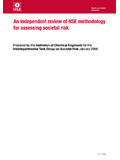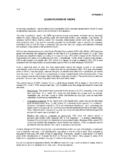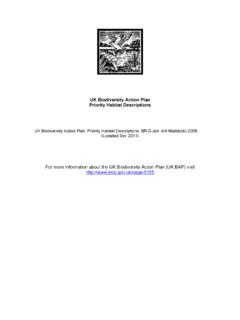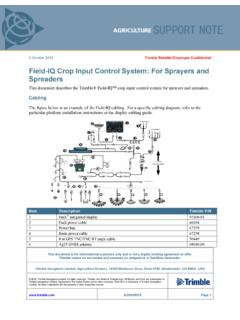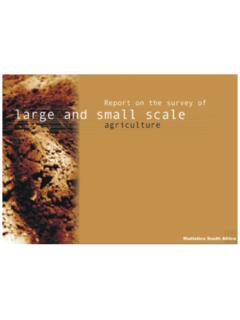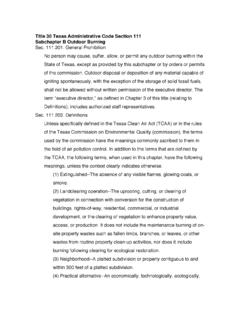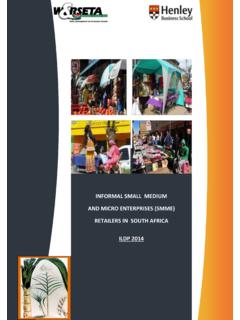Transcription of The Crop Definitions List - Health and Safety Executive
1 Revised November 2017 1 the crop Definitions List the crop Definitions List replaces the crop Hierarchy. It provides consistent terminology for the uses given in Plant Protection Product (PPP) and adjuvant authorisations and databases. It also fully defines the specific crops and situations covered by each term so that users can understand precisely the crops/situations that can be treated under that authorisation. Pesticide and adjuvant users should consider the crop definition in conjunction with the product label, to ensure that any varietal restrictions or other warnings are complied with.
2 This is particularly (but not exclusively) relevant for crop descriptors which encompass a wide range of species ornamental plant production . The list will be updated as necessary; changes will be recorded in the table at the end of this introductory section. Structure The List is arranged in four levels. Level 1 This divides all possible uses of PPPs into 3 categories: All Edible Crops, All Non Edible Crops and Non-Crop Production. The Notice of Authorisation may list one or more of these as an authorised use if the PPP can be used on the full range of crops/situations covered by any of these categories.
3 Levels 2 and 3 Each of the 3 categories above is then divided into Primary groups which may in turn then be sub- divided into Parent groups; Under All Edible Crops , one of the Primary groups is Fruit and Nuts which is sub-divided into the 8 Parent groups Tree Nuts, Pome Fruit, Stone Fruit, Table and Wine Grapes, Strawberries, Cane Fruit, Bush/Small Fruit and Miscellaneous Fruit . Revised November 2017 2 However, these terms will not be used on Notices of Authorisation to describe authorised uses but they are there to help with search functions on our PPP databases.
4 These terms must NOT be used in applications for authorisation. Level 4 The above are finally divided into the Basic Crop/Situation descriptors which are the uses that will usually be specified on Notices of Authorisation and PPP labels. These are the terms that must be used in application forms and draft labels, as applicable to your application. Each descriptor is accompanied by a definition to fully describe the specific crops and situations that may be treated with a product authorised for that Basic Crop/Situation.
5 See also Inclusion of very minor crops below. Qualifiers The List also includes a number of Qualifiers. These can be used on a Notice of Authorisation to further restrict/ modify any of the Basic Crop/Situations if appropriate. the Qualifier seed crop can be used to restrict a use on grassland to that being grown for seed production only (where a lesser consumer risk assessment may be required). In this case the Notice of Authorisation would state Grassland (seed crop) . A list of these Qualifiers with a further description of what they mean is available at the end of the document.
6 Maximum Residue Levels (MRLs) For each edible crop Basic Crop or Situation, the relevant commodity code as listed in Annex I of Regulation (EC) 396/2005 [The Maximum Residue Levels (MRL) Regulation] is specified so that you can identify the MRL that will apply to that specific crop The MRL commodity codes referred to in this document are those that were agreed and voted through at the September 2017 Standing Committee on Plants Animals Food and Feed (Pesticide Residues section) under proposal SANTE/2017/10257). At time of uploading this revision of the crop Definitions List, SANTE/2017/10257 is awaiting the completion of European Parliament and Council scrutiny, to be followed by publication by means of a Commission Implementing Regulation, after which the revised codes will come into legal effect.
7 Whatever the date of publication, once the Implementing Regulation comes into force it will apply the revised codes from 1 January 2018. Revised November 2017 3 The List does not detail all crops to which an MRL applies as many of these would not be grown commercially in the UK. However, under All Edible Crops in the Primary Group Stored products , section, there are MRLs specified which will allow for authorisations to treat imported produce which may not be grown in the UK. Additional advice on Stored products is given below.
8 Crop Categories In the UK, crops can be described as major or minor (and sometimes very minor ) depending on the amount of that crop grown in the UK. Major UK crops are; grassland, barley, forage maize, oats, wheat, dry harvested field beans, oilseed rape, sugar beet and potatoes (other than seed). Major crops are generally not eligible for Extensions of Authorisation for Minor Use (EAMU) authorisations (in accordance with Article 51 of Regulation (EC) 1107/2009). All other crops are considered minor and can be considered for an EAMU (subject to demonstration of need and an acceptable risk assessment).
9 In addition, there are a number of crops grown (or potentially grown) on a very small scale, where the risk to humans and the environment and the maximum residue level is the same as another crop. These are described as very minor crops . Further information on how these are addressed with the crop Definitions List is given under the heading Inclusion of very minor crops below. Inclusion of very minor crops Commission Regulation (EU) No 752/2014 expands on previous versions of Annex I of Regulation (EC) 396/2005, in that it identifies numerous very minor crops to which applies the same MRL as a more widely grown crop.
10 HSE has taken this opportunity to expand on the Basic Crop/Situation Definitions to include some of these very minor crops. These very minor crops are only included where they have the same MRL commodity code and are subject to same environmental and human risk assessment as the Basic Crop or Situation. These are identified in the Definitions column under a sub-heading Minor uses and appear in grey text. Revised November 2017 4 Growers may apply products which are authorised on a particular Basic Crop or Situation ( blueberry ), to the very minor crops which are detailed within that definition Haskaps/blue honeysuckles amongst others.









